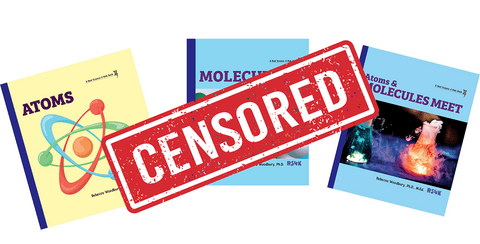Imagine Benjamin Franklin walking into your child’s science classroom. The interactive whiteboard might surprise him, the tablets would seem magical—but the lesson? That would feel eerily familiar.
The teacher holds up a candle. “Watch how heat rises,” she says, as warm air shimmers upward. Students dutifully write: “Heat rises.” Across the room, kids are sorting objects into solids, liquids, and gases. They learn that ice is a solid, water is a liquid, and steam is a gas—but no one explains that these are all the same molecules, just moving at different speeds.
Franklin would nod approvingly. This is how he understood the world back in 1799.
The 200-Year Gap
Now consider what we’ve learned since Franklin’s time:
-
1803: Dalton proposed that matter is made of atoms
-
1860s: Scientists discovered that what we feel as “heat” is actually molecular motion, not a substance that flows
-
Early 1900s: We uncovered the structure of atoms and the behavior of electrons
-
Today: Our phones, medicines, and energy systems all depend on atomic and molecular science
Yet walk into most elementary classrooms in 2025, and you’d think none of this ever happened.
Kids are still taught that heat “rises” as though it’s a thing that floats up. They memorize the states of matter without learning that all matter is made of particles in motion. They learn effects—but not causes.
We're teaching science through Franklin’s eyes, not Einstein’s.
Real Classrooms, Real Problems
I’ve watched many elementary science videos—each one covering some aspect of science. In one third-grade lesson on states of matter, the teacher demonstrated ice melting in a dish.
“The ice changes into water,” she explained. “A solid becomes a liquid.”
A student on screen raised a common question: “But where does the ice go?”
“It becomes water,” the teacher repeated.
The student tried again: “But how?”
And that’s where the lesson stalled. The real explanation—that as energy is added, the water molecules begin moving faster, breaking out of their rigid crystal structure and flowing past each other—isn't part of the curriculum at that level.
So the teacher gave the default response heard for decades: “You’ll learn that when you’re older.”
End of discussion. Another natural question left unanswered. Another moment of scientific curiosity quietly closed.
The Global Consequences
This isn’t just an issue of pedagogy—it’s a matter of national competitiveness.
In countries like China, students aren’t waiting until high school to learn the atomic model. They’re introduced to the idea that faster-moving molecules = higher temperature and that phase changes happen because particles move and reconfigure.
The result? China now produces twice as many STEM PhDs as the U.S. Their students see science as a connected web of understandable processes. Ours often see it as a scattered list of facts to memorize.
We’ve had two centuries to update our elementary science curriculum. Instead, we’re still teaching pre-atomic ideas in a quantum world.
It Doesn’t Have to Be This Way
The good news? Some educators are already showing what’s possible.
When second-graders are taught that water is made of tiny particles called molecules—and that these molecules move faster as they heat energy is converted to kinetic energy—they don’t just learn that ice melts. They learn why.
They stop seeing science as magic and start seeing it as logical. By the time they reach middle school, they’re not battling misconceptions—they’re building on a solid foundation.
What We Need
We need to stop fearing that young children “can’t handle” real science. They can—when we present it with clarity, accuracy, and connection. We need to stop filling their heads with placeholders and myths we’ll have to undo later. We need to trust that giving them real explanations now will make science easier, not harder, down the road.
Benjamin Franklin was a genius of his age. But it’s not his age anymore.
Our kids live in a world of AI, gene editing, and quantum computing. They deserve a science education that matches their time—not Franklin’s.
The tablets in their classrooms prove we’re capable of change. Now let’s change what’s on those tablets.





Comments (0)
There are no comments for this article. Be the first one to leave a message!